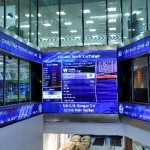Yesterday’s trade saw EUR/SEK within the range of 9.4845-9.6266. The pair closed at 9.5496, gaining 0.17% on a daily basis.
At 7:56 GMT today EUR/SEK was down 0.09% for the day to trade at 9.5379. The pair touched a daily low at 9.5078 during early Asian trade.
Fundamentals
Euro zone
Spanish Harmonized Consumer Price Index – preliminary estimate
Spain’s annualized consumer inflation probably continued to decelerate in December, reaching a level of -0.7%, the preliminary estimate is expected to reveal today. If so, this would be the sixth consecutive month of negative inflation. In November the annual rate of inflation was reported at -0.4%, according to final data, released on December 12th. In November the largest downward pressure came from sectors such as transportation (-1.7%) due to lower prices of fuel and lubricants; recreation and culture (-1.5%) and communication (-5.8%). The cost of housing, electricity and water remained the same, despite the drop in electricity prices.
The largest upward pressure was reported for education (an annual increase of 1.3% in November), and miscellaneous goods and services (up 1.2% during the period). In November consumers also paid more for alcoholic drinks and tobacco (+0.4%), clothing and footwear (+0.4%) and food (+0.2%).
Key categories, included in Spans Consumer Price Index (CPI), are food and non-alcoholic beverages (accounting for 20% of the total weight) and transport (15%). Other categories are real estate (12%), hotels, coffee and restaurants (11.5%), clothing and footwear (9%) and entertainment and culture (7.5%). Health, communication, education and other goods and services comprise the remaining 25% of the index.
The CPI measures the change in price levels of the abovementioned basket of goods and services from consumer’s perspective and also provides clues over purchasing trends. In case the annualized CPI dropped more than projected, this would have a bearish effect on the euro. The National Statistics Institute (INE) will release the preliminary inflation data at 8:00 GMT.
Spanish preliminary annualized CPI, evaluated in accordance with Eurostat’s harmonized methodology, probably dropped 0.7% in December, following a 0.5% dip in November, as reported on December 12th. If so, this would be the most significant annual drop in over four years.
Spanish retail sales
Annualized retail sales in Spain, with a seasonal adjustment applied, probably rose at a pace of 0.8% in November, according to the median estimate by experts, following another 1.0% increase in October. If so, this would be the fourth consecutive month of gains. This indicator reflects the change in the total value of inflation-adjusted sales by retailers in the country and provides key information regarding consumer spending trend in a shorter term, while the latter is a key driving force behind economic growth. Companies, operating in the retail sector, provide monthly data regarding 4 main categories: food, personal equipment, household appliances and additional information in regard to other types of consumer goods. In case the retail sales index increased at a faster-than-expected pace, this would have a certain bullish effect on the euro. The National Institute of Statistics (INE) is expected to release the official report at 8:00 GMT.
Euro zone private sector lending
Lending to individuals and business entities in Euro areas private sector probably shrank at an annualized rate of 0.9% in November, according to market expectations, after a month ago the total value of private sector loans decreased 1.1%. If so, this would be the least annual drop since April 2013. In case lending shrank at a lesser pace than anticipated, this would support demand for the euro, as it implies higher economic activity in the future in terms of consumer spending and business investments. The European Central Bank (ECB) is expected to release the official data at 9:00 GMT.
Italian Business confidence
Confidence among manufacturing companies in Italy probably improved in December, with the corresponding index coming in at 96.7, from 96.3 in November. If so, this would be the highest level of confidence since July, when the index stood at 99.1.
The Manufacturing Confidence survey features 4 000 Italian companies. Respondents give their opinion regarding the current trend of order books, production and inventories, short-term forecasts on order books, production, prices and the general economic situation.
The index of business confidence is seasonally adjusted and has a base year of 2005. Readings of 100.0 signify neutrality in business sentiment. Values exceeding 100.0 imply improving confidence, while values below 100.0 are related with low expectations. Higher-than-anticipated values may have a limited bullish effect on the common currency. The official reading by the Istat is due out at 9:00 GMT.
Sweden
Balance of trade
The surplus on Swedens balance of trade probably was at the amount of SEK 1.1 billion in November, according to market expectations, following a trade deficit of SEK 0.2 billion in the prior month. Total exports rose at an annualized rate of 6% to SEK 103.1 billion in October, while the value of imports increased 10% to SEK 103.3 billion. In October 2013 the nations trade balance produced a SEK 3.3 billion surplus.
Nations major exports include machinery, motor vehicles, paper products, pulp and wood, iron and steel products, chemicals, while major imports are machinery, petroleum and petroleum products, chemicals, motor vehicles, iron and steel.
The trade balance, as an indicator, measures the difference in value between the country’s exported and imported goods and services during the reported period. It reflects the net export of goods and services, or one of the components to form the Gross Domestic Product. Generally speaking, exports reflect economic growth, while imports indicate domestic demand.
In case the trade balance surplus expanded more than anticipated, this would have a bullish effect on the krone. Statistics Sweden is expected to release the official trade data at 8:30 GMT.
Pivot Points
According to Binary Tribune’s daily analysis, the central pivot point for the pair is at 9.5536. In case EUR/SEK manages to breach the first resistance level at 9.6226, it will probably continue up to test 9.6957. In case the second key resistance is broken, the pair will probably attempt to advance to 9.7647.
If EUR/SEK manages to breach the first key support at 9.4805, it will probably continue to slide and test 9.4115. With this second key support broken, the movement to the downside will probably continue to 9.3384.
The mid-Pivot levels for today are as follows: M1 – 9.3750, M2 – 9.4460, M3 – 9.5171, M4 – 9.5881, M5 – 9.6592, M6 – 9.7302.
In weekly terms, the central pivot point is at 9.5306. The three key resistance levels are as follows: R1 – 9.6148, R2 – 9.6633, R3 – 9.7475. The three key support levels are: S1 – 9.4821, S2 – 9.3979, S3 – 9.3494.





